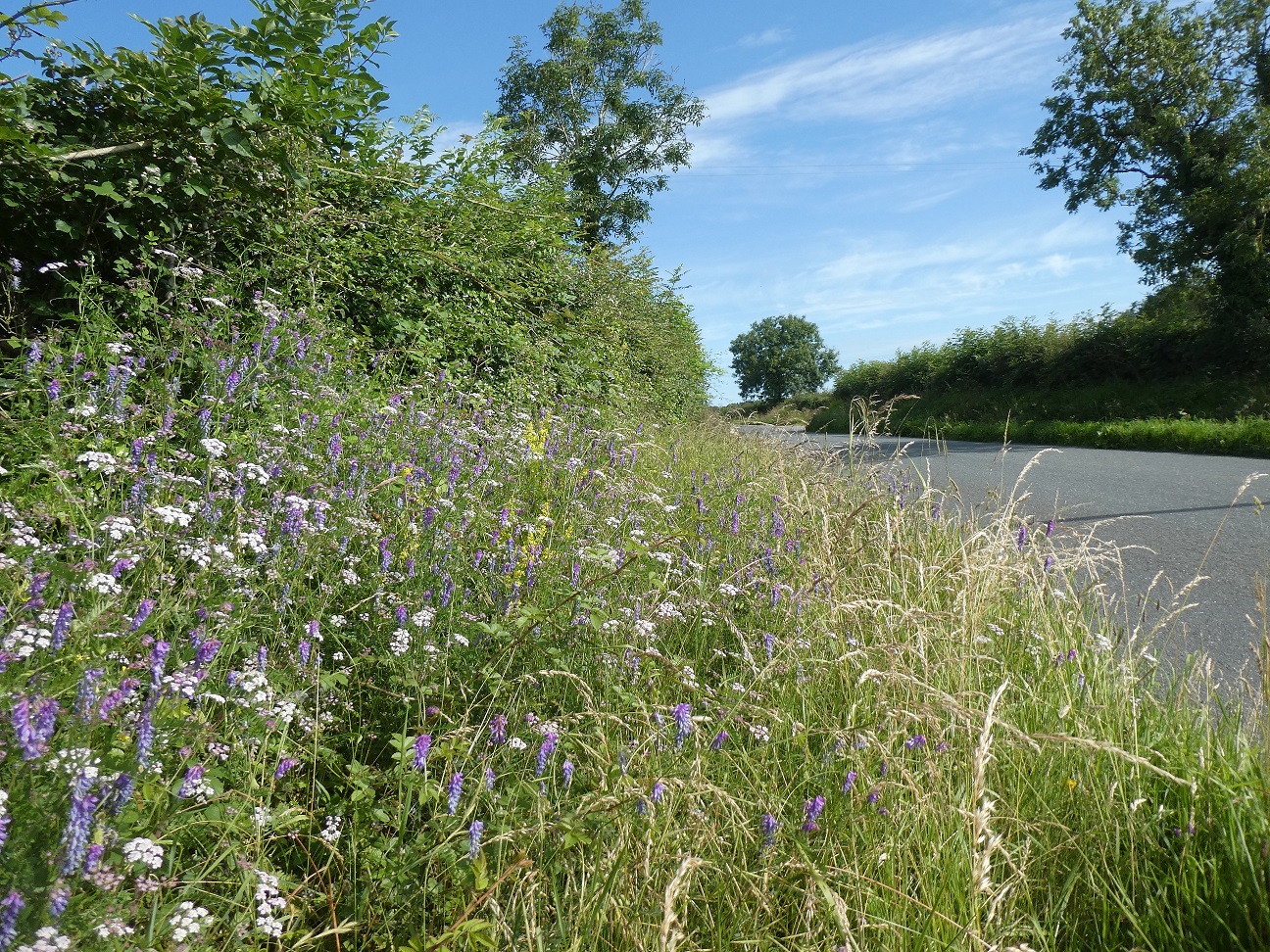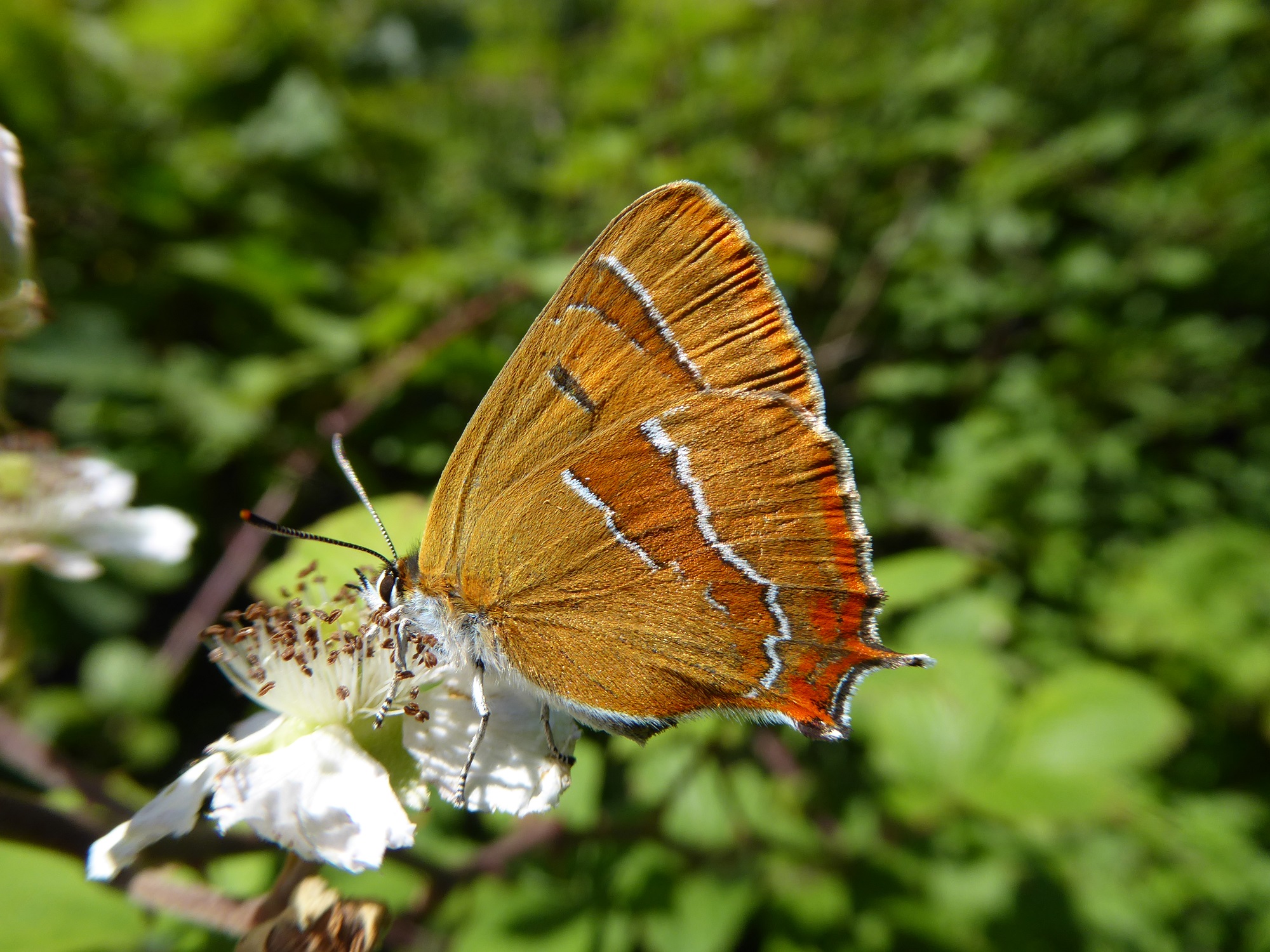Under the Wildlife Acts, hedgerow cutting is banned during the period March 1st to August 31st inclusive.
This ban is legally enforced, and many prosecutions have been taken by excellent National Parks and Wildlife conservation officers charged with protecting our diminishing heritage. Burning, cutting, and grubbing vegetation during this period is also prohibited.
If you see anyone breaching the law, take photos of the incident and machinery and contact your local National Parks and Wildlife Service officer. You can also contact the Gardaí.
The following are the contact details for the National Parks and Wildlife Service.
The Eastern region:
https://www.npws.ie/contact-us/eastern-division
Northern region:
https://www.npws.ie/contact-us/northern-division
Western region:
https://www.npws.ie/contact-us/western-division
Southern region:
https://www.npws.ie/contact-us/southern-division
Hedges are especially important for butterflies and moths. 65% of Irish butterflies use hedges. Some use hedgerow trees as breeding plants, some use grasses and flowers growing on the warm margins for breeding. In addition, many adult butterflies use hedges as territory, mating stations, nectar sources, flight paths, dispersal routes, and hibernation sites. The Brimstone butterfly uses hedgerows for all these reasons, while the Brown Hairstreak uses hedges for breeding, meeting and mating, feeding, and as a flight path.
A study by Merckx et al. (2012) found the hedgerow trees and extended width margins locally increased the number of larger moth species (also known as macro-moths) but not the abundance. Interestingly, they found that species richness and abundance were not affected by intensive farming, measured by the amount of arable land in the landscape. Both mobile and less mobile larger moths did better when extended width margins and hedgerow trees were present.

The benefits of trees in the hedgerow were especially strong for tree-feeding species. Increasing the density of hedgerow trees was recommended to lessen the effects of agricultural intensification. The study underlined the value of hedgerow trees, claiming “a disproportionate effect on ecosystem functioning given the small area occupied by any individual tree”.
The study also found a link between increased macro moth populations and ecosystem functioning (in other words, the higher moth abundance and species richness improve biological community functioning).
Why is this? Moths are associated with higher pollinator success, which benefits crops and animals, and moths are an important prey base for a range of species.
A study by Coulthard et al. (2016) showed that hedges are very important flight paths for moths. 68% of moths in the study were observed at 1m from the hedge and of these 69% were moving parallel to the hedge. Hedges are believed to provide the sheltered corridors needed by flying insects in our generally open, farmed landscapes.
These studies highlight how crucial hedgerows and hedgerow trees are for butterflies, moths, and biodiversity generally. It is crucial that hedges are protected and correctly managed. A badly managed hedgerow can be disastrous for some of our rarer species. For example, many species that breed on hedges lay eggs on the newest growth. Unfortunately, it is this outer part of the hedge that is removed by cutting. The Brown Hairstreak butterfly is extremely vulnerable for this reason, and Berwearts and Merckx (2010) report studies that found that annual mechanical cutting of hedges removes 80-99% of Brown Hairstreak eggs. A rotational cutting system that involves cutting one-third of the hedgerows in an area each winter resulted in the butterfly’s longer-term survival.

Even more serious is the removal of hedgerows by farmers who want to increase field sizes. Outside protected areas, this can be done between August 31st and March 1st. Given the importance of hedgerows to butterflies, moths, and many other species, our landscape cannot afford such losses. Another damaging though the smaller-scale practice is the replacement of hedgerows comprising several native species with a single species hedge, often non-natives such as Common Beech, laurel, and leylandii, among others. In some parts of the west, non-native fuchsia hedging has become naturalized, disfiguring the landscape, displacing native species, and reducing biodiversity. These alien species are of much less value because they have not co-evolved with the other species naturally present here.
Our hedges are crucial to our landscapes, giving our countryside character, building a sense of place, and hosting much biodiversity. The poet Wordsworth described the hedgerows at Tintern Abbey as “Little lines of sportive wood run wild”. While some management is necessary, a more relaxed attitude would be a great boost to butterflies and much else!
References
Coulthard, E., McCollin, D. & Littlemore, J. 2016, “The use of hedgerows as flight paths by moths in intensive farmland landscapes”, Journal of insect conservation, vol. 20, no. 2, pp. 345-350.
Merckx, T., Marini, L., Feber, R.E., Macdonald, D.W., Kleijn, D. & Sveriges lantbruksuniversitet 2012, “Hedgerow trees and extended-width field margins enhance macro-moth diversity: implications for management”, The Journal of applied ecology, vol. 49, no. 6, pp. 1396-1404.

